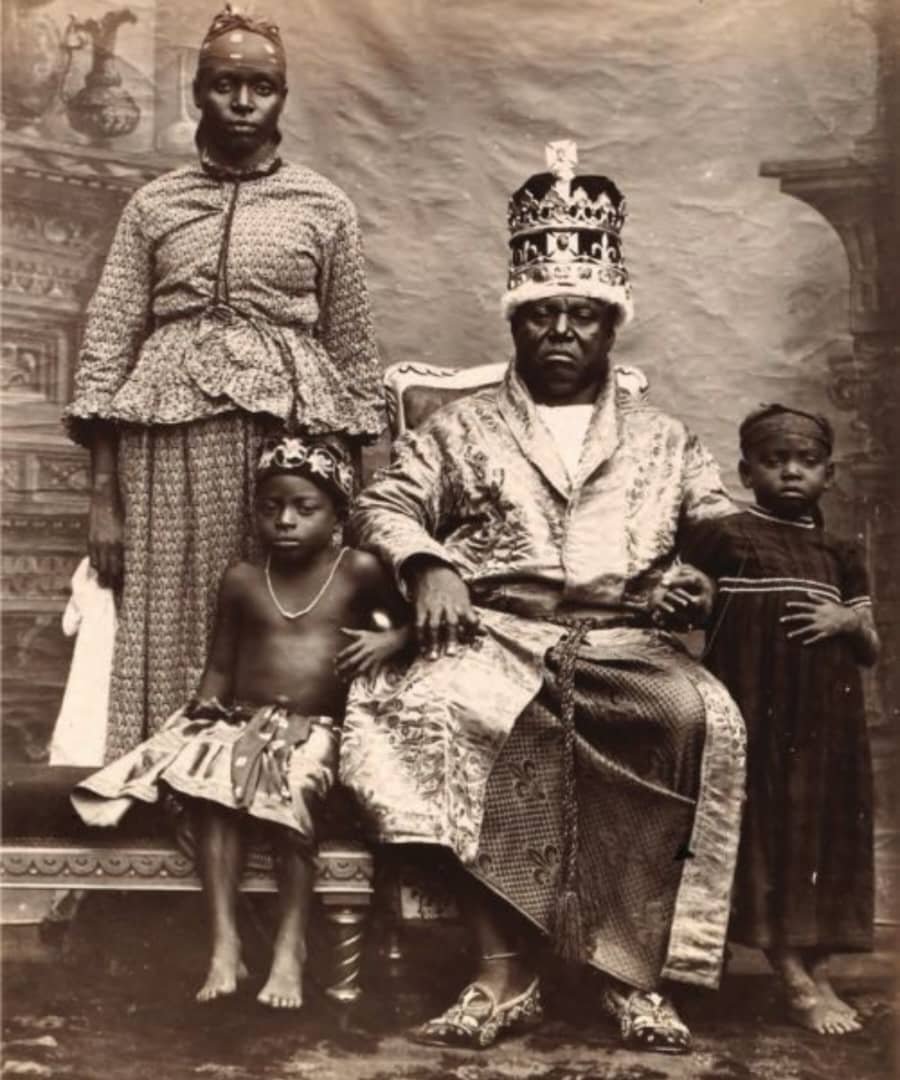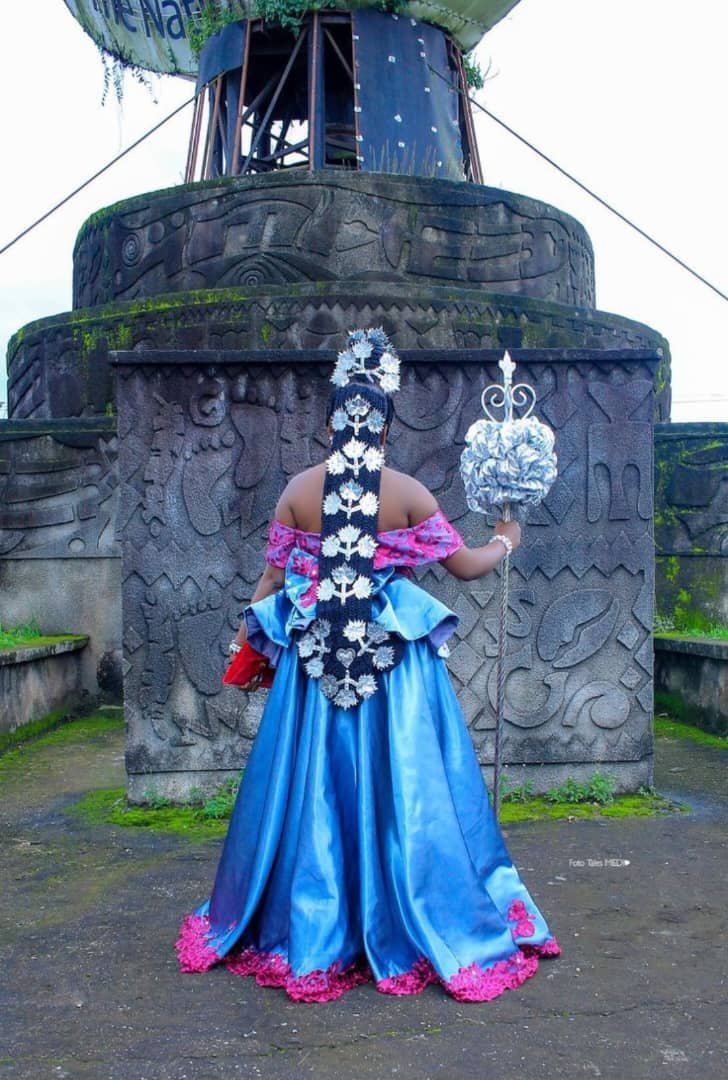Efik traditional dress is a vibrant testament to the rich culture of Southeastern Nigeria. Over centuries, colonial encounters left an indelible mark on Efik attire, blending indigenous artistry with European influences. From the pre-colonial days of raffia and ivory to Victorian gowns and modern adaptations, the Efik have skillfully merged the old with the new. In this article, we explore five fascinating ways colonialism influenced Efik traditional dress while celebrating its enduring legacy.

Pre-Colonial Foundations of Efik Traditional Dress

Before European contact, the Efik crafted their clothing from natural fibers like raffia and adorned themselves with accessories such as ivory bracelets and brass rings. These materials were not mere adornments but held significant cultural and social value. Raffia, for instance, was woven into intricate designs that signified the wearer's age, marital status, or social standing.
Ivory, sourced from elephant tusks, was a rare and highly prized material reserved for the elite. Its use signified wealth and power, particularly among chiefs and influential families. Similarly, brass rings and other metallic ornaments were symbols of prestige. These adornments often accompanied elaborate hairstyles like the “Etenge,” which showcased the community’s creative ingenuity. The Etenge hairstyle, known for its intricate and towering structure, was not just a beauty statement but also a marker of cultural identity and pride.
Efik traditional dress during this period was deeply tied to the environment and local resources. The community’s artistry in crafting their attire reflected their harmony with nature and their innovative use of available materials. This pre-colonial fashion was not only functional but also a medium for storytelling, with patterns and designs often conveying historical narratives and ancestral connections.
European Fabrics and the Victorian Influence on Efik Attire

The arrival of European traders, particularly the Portuguese, marked a turning point in Efik traditional dress. The Portuguese introduced luxurious European fabrics, including silk, brocade, and velvet, which were quickly integrated into Efik clothing traditions. These materials were more durable and visually striking than locally sourced fabrics, making them highly desirable. The trade in textiles became an important aspect of the economic relationship between the Efik and Europeans, shaping the evolution of Efik traditional dress.
One of the most iconic outcomes of this cultural exchange was the Ọnyọnyọ gown, a pivotal piece of Efik traditional dress. Modeled after Victorian dresses, the Ọnyọnyọ gown was characterized by its flowing silhouette, elaborate embroidery, and dramatic sleeves. It became a staple for special occasions, such as traditional weddings and initiation ceremonies. While its origins were European, the Efik infused the gown with local significance, transforming it into a symbol of cultural pride and elegance.
The adoption of European fabrics and designs did not diminish the Efik’s traditional aesthetic. Instead, it enriched Efik traditional dress, creating a unique blend of styles that celebrated both heritage and modernity. The integration of lace patterns and floral motifs into the Ọnyọnyọ gown is a testament to the Efik’s ability to adapt foreign influences to suit their tastes and cultural values, further cementing its place as a cornerstone of Efik traditional dress.
Colonial Impact on Efik Men's Fashion

The influence of colonialism extended to Efik traditional dress, men’s fashion, resulting in a distinctive fusion of traditional and European styles. Before European contact, Efik men typically wore wrappers made from local fabrics, complemented by simple accessories like beads. However, colonial interactions introduced elements like white shirts, tailored jackets, and hats, which quickly became popular among the Efik elite.
This fusion was particularly evident in ceremonial attire. Men began pairing their traditional wrappers with crisp white shirts and European-style hats, creating a hybrid look that exudes sophistication. Walking canes, another European import, became status symbols among affluent men. These canes were not merely functional but also symbolized authority and prestige.
The blending of these styles demonstrated the Efik’s openness to new ideas while maintaining their cultural identity. The juxtaposition of traditional and European elements in men’s fashion mirrored the broader societal changes brought about by colonialism, where modernity and tradition coexisted in a dynamic and evolving cultural landscape.

Blending Foreign Styles with Efik Cultural Heritage

One of the most remarkable aspects of Efik traditional dress is the community’s ability to adapt to foreign influences while preserving its cultural essence. The introduction of European styles and materials could have overshadowed indigenous traditions, but the Efik skillfully reimagined these elements to align with their cultural norms.
The Ọnyọnyọ gown, for instance, is now synonymous with Efik culture, despite its European roots. Its evolution from a Victorian-style dress to a cultural emblem underscores the Efik’s resilience and creativity. The gown’s design has been modified over time to include features like intricate beadwork and vibrant colors, which reflect the Efik’s artistic sensibilities.
Similarly, traditional hairstyles and accessories continue to play a crucial role in Efik fashion. Modern adaptations of the Etenge hairstyle, for example, incorporate contemporary techniques and materials while staying true to its cultural significance. This blend of old and new ensures that Efik traditions remain relevant in a rapidly changing world.
Modern Evolution of Efik Traditional Dress

Today, Efik traditional dress continues to evolve, blending historical influences with contemporary trends. Designers and cultural enthusiasts are working to preserve and promote Efik fashion on a global stage. Events like cultural festivals and fashion shows provide platforms for showcasing the beauty and diversity of Efik attire.
Serviced Apartments like ChallawaRiver Homes in Calabar offer visitors an opportunity to experience Efik culture firsthand. This up market accommodation not only highlights African-inspired art and decor but also serves as a gateway to understanding Efik heritage. At ChallawaRiver Homes, the immersive atmosphere allows visitors to connect with the cultural richness of the Efik people, making it a must-stay destination for anyone interested in Nigeria’s cultural legacy.
The global appeal of Efik fashion is evident in its influence on contemporary African design as seen in brands like Deola Sagoe and other designers who celebrate African heritage.
Many designers draw inspiration from Efik motifs and techniques, incorporating them into modern collections that celebrate African identity. This resurgence of interest in traditional attire is a testament to the enduring legacy of Efik fashion.

The evolution of Efik traditional dress highlights the resilience and creativity of the Efik people in preserving their identity. Colonialism brought new influences, but the Efik skillfully adapted these elements, enriching their cultural legacy. From the natural fibers of pre-colonial times to the luxurious fabrics of the colonial era, Efik attire tells a unique story of adaptation, creativity, and enduring pride.
At ChallawaRiver Homes, The Homage by Ukandi Atsu creates a visual ode to Efik heritage, investigating the nuances of female identity within a traditional framework. This exploration resonates deeply with the story of Efik attire, which blends pre-colonial traditions with colonial influences to craft a distinctive and evolving fashion legacy. The incorporation of colonial elements, such as imported fabrics and European tailoring techniques, was not a loss of culture but a bold assertion of identity—an artistic and symbolic adaptation that preserved the essence of the Efik people while enriching their visual narrative.
By understanding this journey, we gain a deeper appreciation for the artistry and significance of Efik traditional dress. It is not merely clothing but a living testament to the community’s history, values, and aspirations. As the Efik continue to innovate and celebrate their heritage, their traditional dress remains a powerful symbol of their cultural identity and resilience.
Serviced apartments like ChallawaRiver Homes play a vital role in preserving and sharing this legacy, ensuring that future generations and global audiences can experience the timeless beauty of Efik fashion.